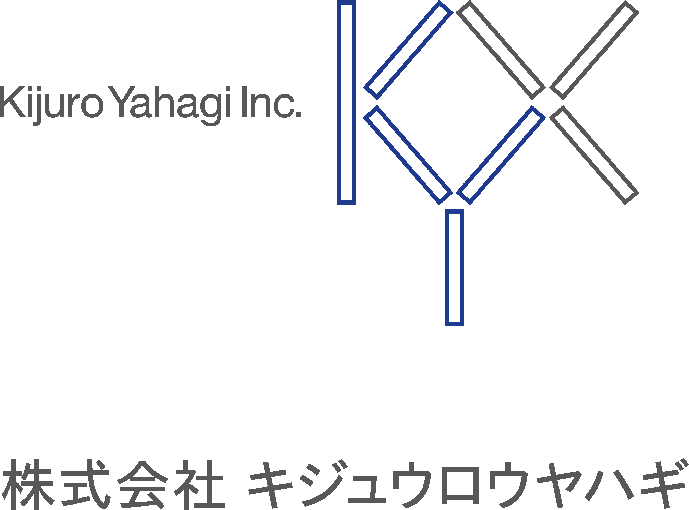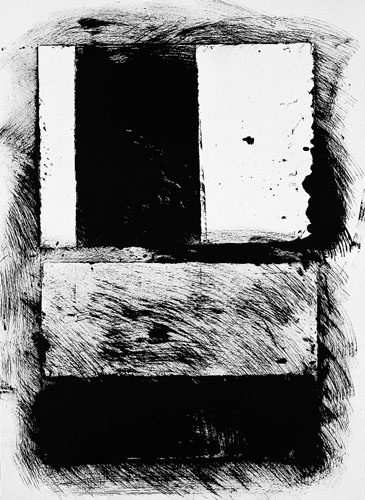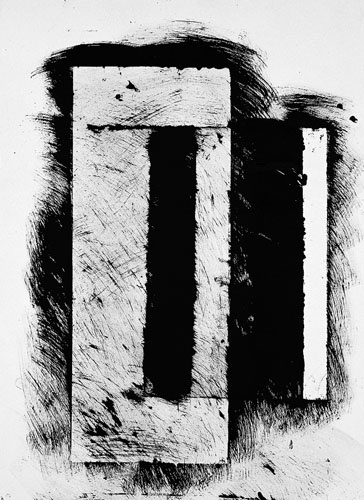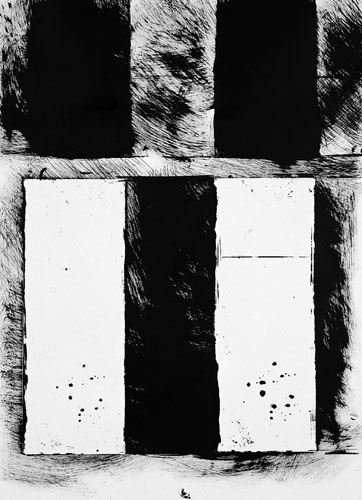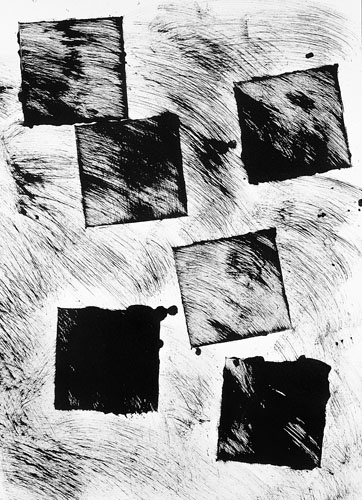無双窓/ Muso Window
人それぞれ違うと思うが、わたしなどは、自分の気持が白か黒かを明確に表明したいという欲望がある。けれども、一方で、白とも黒とも言えず曖昧な態度しか表明できない状況があることも知っている。わたしが、その精神の有り様に注目していた時、日本の木造建築にある、連子を前後に二つ並べて外側を固定し、内側の連子窓を動かして隙間を調節して風が入り込む度合いを変える為の装置、無双窓を頭に浮かべていた。何故、無双窓をイメージしたかと言えば、我々のその都度の精神の有り様を抽象化して語る装置と思ったことに因る。
閉じられた箇所を黒、そして外部が見える隙間を白として考えると、明確な白、黒から、曖昧に白が少なくなって、終いには全く白が無くなる。無双窓の原理。わたしはこの必ずしも白と黒が明確に分かれているものばかりでなく、風の調節を考えた半開き、閉められる直前といった曖昧なものを見ると、曖昧なものにも、いつしか強く惹きつけられることになったのだった。
Each person is different, but I have the desire to clearly state my feelings in black or white terms. At the same time, there are some situations which are ambiguous and cannot be expressed in such terms. When I was paying attention to the state of mind, I had in mind the “Muso Window.” This is a device used in Japanese wooden architecture in which the degree of wind that penetrates can be adjusted by arranging two latticework windows back to back, then fixing the outside and moving the inner latticework window to adjust the gap. The reason that the “Muso Window” came to mind was that I considered it a device that would enable us to abstract and talk about the state of our spirits at each particular time.
If we think of the closed areas as black, and the gaps from which the outside is visible as white, we can start with a clear depiction of black and white, then vaguely decrease the white until there is no white at all. This is the principle of the “Muso Window.” I saw ambiguous windows as well as black and white ones. These included the half-open windows for wind control and windows just before being closed. It was the ambiguous windows that strongly attracted me.
